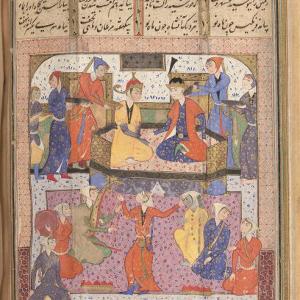
Miniature from Ferdowsi: Shahnama
© Bayerische Staatsbibliothek
In the 19th century, European scholars’ quest to find the oldest Bible manuscripts was at its zenith. One of the most underestimated manuscript hunters of the day was Friedrich Grote (1861-1922), who, in the 1890s, announced a sensational find.
While the general public was elated, his fellow experts rejected his claims – making of the scholar a dealer and collector. His collection comprised hundreds of fragments from Saint Catherine’s Monastery on the Sinai Peninsula. Bible hunters such as Constantin Tischendorf had earlier made ground-breaking discoveries here; Grote too had worked among them. Though he did not surpass Tischendorf as a researcher, he easily did so in disseminating the monastery’s cultural treasures.
This lecture addresses the context and consequences of his activities, highlighting the importance of provenance research when dealing with Middle Eastern cultural heritage.
A lecture by Peter Tarras (LMU) in the series Cultures of Islam by the Münchner Mittelost-Mittelmeer-Mittelasien-Zentrum (4MZ).
The lecture will be held in German. You can find more information on the website of the lectures series.
